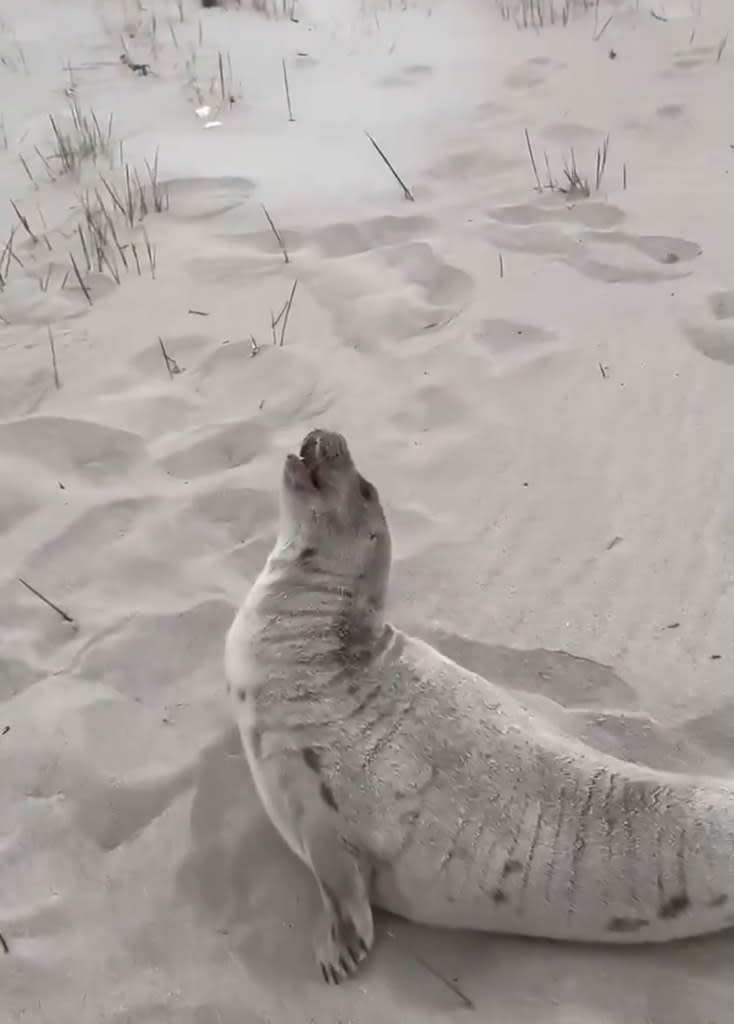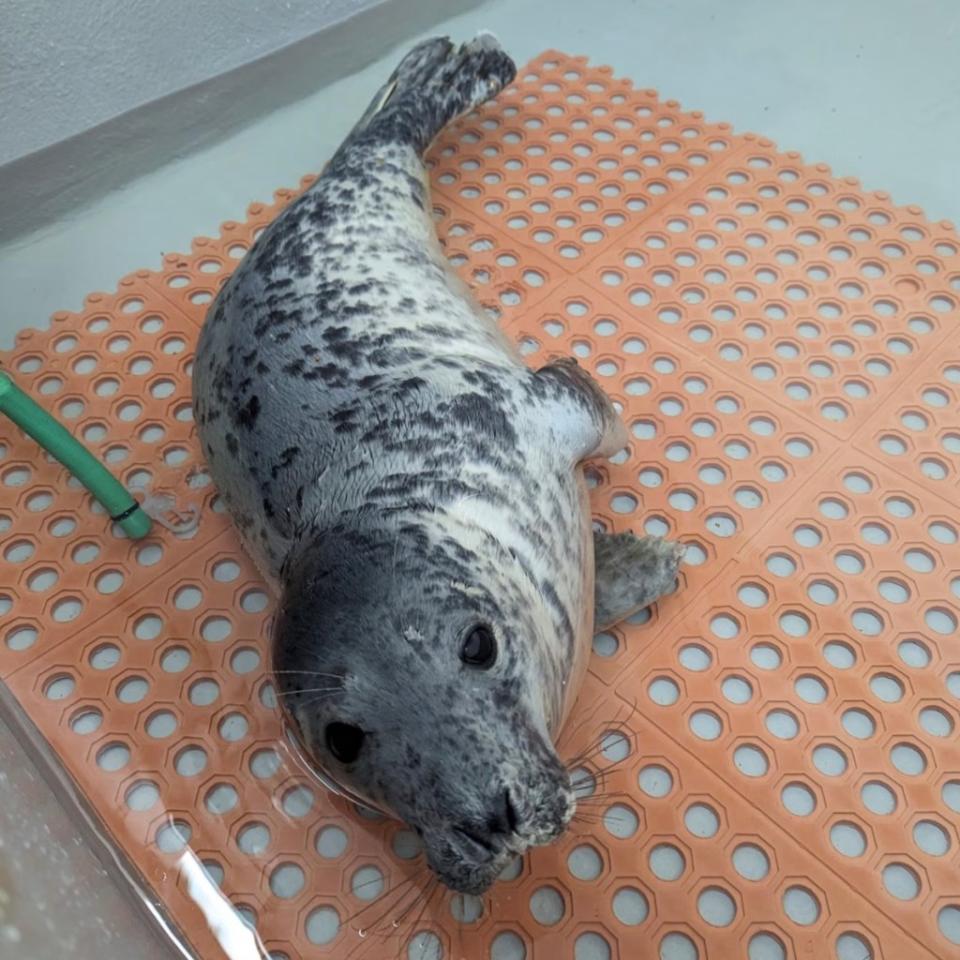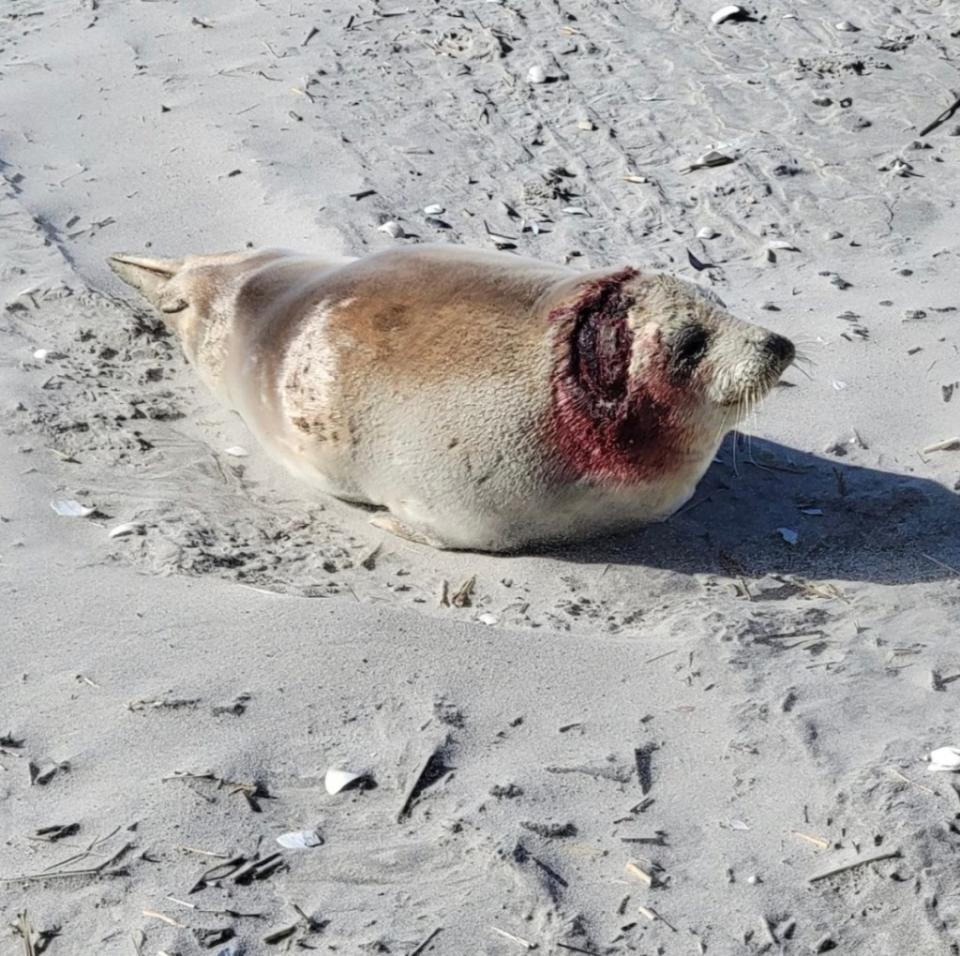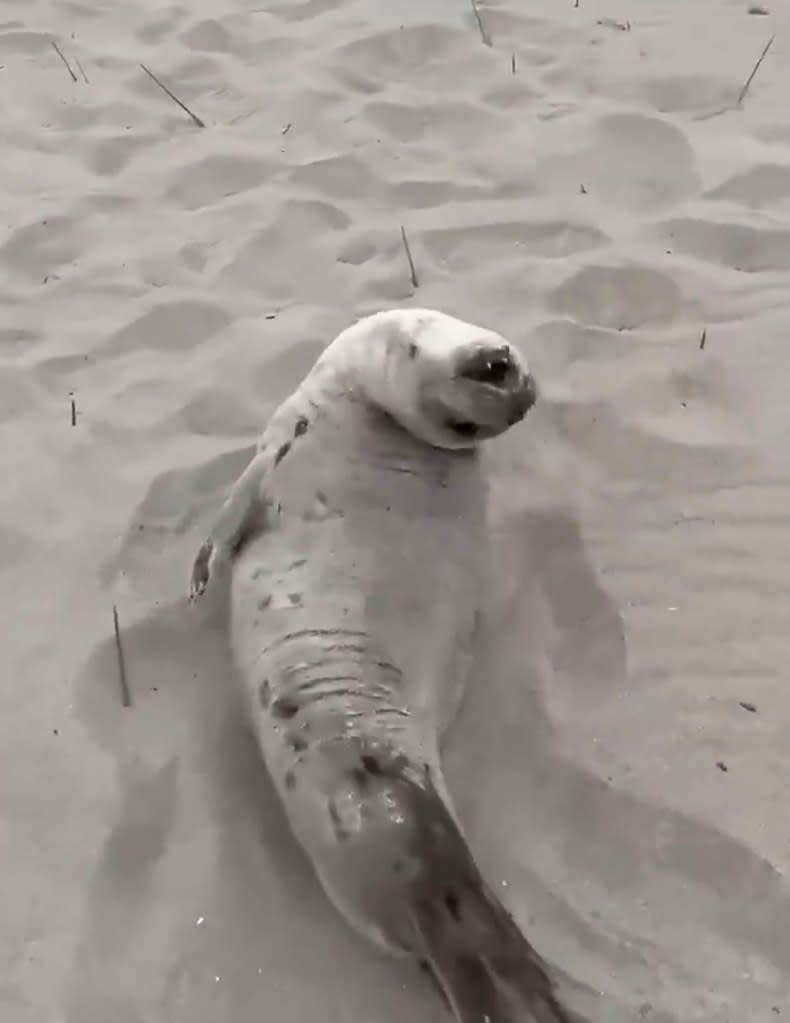Here’s why are so many seals suddenly stranded in and around NYC

Forget Shark Week – this time of year is all about seal season.
The light-colored seal that popped up on the sand on Coney Island Wednesday is part of a yearly spate of beached seals in and around the New York area, an expert told The Post.
“It is what we consider our seal season, so typically we start to get a lot of strandings towards the end of January and early February, and they really start to pick up between March and April,” Jill Pryor, the senior biologist with the NY Marine Rescue Center, explained.

Locals may continue to see stranded seals here and there through May, she told The Post.
The seal that was found on Coney Island was determined to be a harp seal – an Arctic species that Pryor says regularly come down to the waters around New York during the colder months.
The other common species are gray seals and harbor seals, both of which pup during the wintertime and into the spring, Pryor noted.
“A lot of them are much younger,” she said of the stranded seals.
“We tend to see a lot of the pups after they’re weaned from mom – which happens after only about three or four weeks – and they’re off on their own, figuring out what beaches to come up on.”
Three seals also washed up in the Jersey Shore this week, NJ.com reported.
Two female seals – including one harp species – were found with grisly injuries, while a male pup was emaciated, the outlet said.

All three were taken to the Marine Mammal Stranding Center for care.
It’s difficult to determine exactly how seals get injured, though they have been known to get on the wrong side of boat propellers or even sharks, Pryor said.
Evidence of the latter, she said, often looks like puncture wounds, while boat injuries are more like horizontal gashes.
Visiting harp seals can also struggle with the consequences of unseasonably warm temperatures, especially because they like to feast on snow and ice.

“They’ll come down here, it will be too warm, and they’ll start to get dehydrated,” Pryor explained.
If they cannot find snow on the beach, they will sometimes start to eat rocks and sand and will require medical intervention.
As for what people can do to help keep stranded seals safe, Pryor cautioned beachgoers to not try and stay at least 150 feet away from the creatures.
“People sometimes don’t know what is normal and what’s not. It is normal for them to be up on the beach, they’re just resting,” Pryor reassured.

There also sometimes issues with people trying to take selfies with the seals, or off-leash dogs getting too curious, she added.
As for how to tell if a seal is safe or in distress, Pryor advised the public to notice seals that are lying on their side with their rear flippers and heads raised.
The “banana pose,” Pryor said, is a sign of good health.
“They have things like wounds or other notable visual injuries, we want to know about that. And also if the animal is laying on its stomach not really picking its head up,” she advised.

